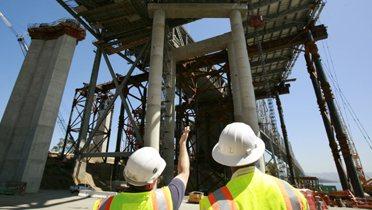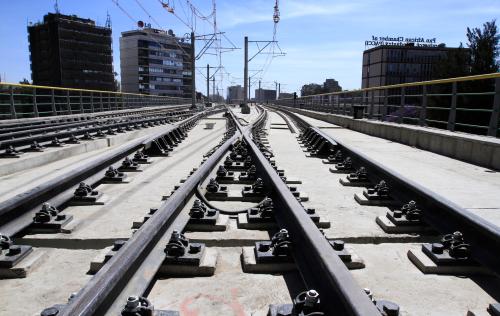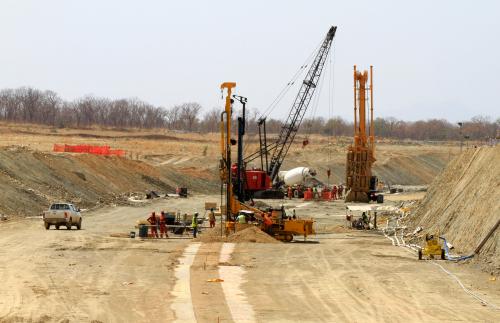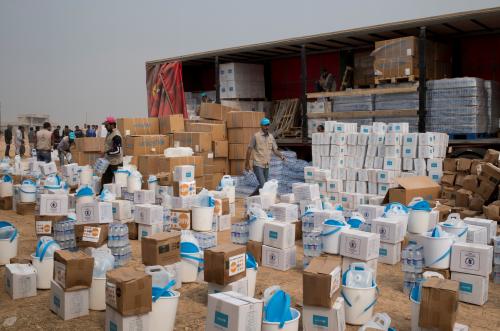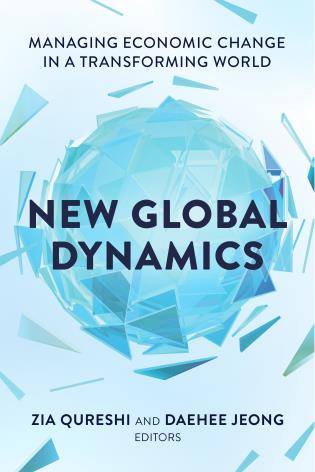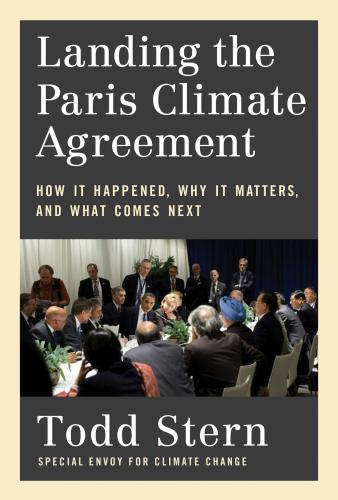Executive Summary
Sovereign wealth funds, foreign state managed social security plans, foreign currency reserve funds, foreign government employee pension funds, state-controlled operating companies and other foreign investing vehicles today collectively control trillions of dollars in assets and are projected to maintain significant growth over the next decade. These disparate foreign government entities-characterized in this report as Global Public Investors (“GPIs”)-are becoming increasingly influential players in the world economy. In the volatile contemporary global financial environment, the investment strategies of these foreign entities will impact capital flows and affect markets around the world.
Despite their growing salience in the international economy, policy-makers and political leaders in the United States have only a partial understanding of the investing practices, management and governance of these sources of foreign capital. There is finite knowledge regarding their strategic, political and regulatory implications and limited appreciation of their enhanced role in the deployment of global capital.
In this report, participants in the Brookings Institution Project on Foreign Capital and Global Public Investors have drawn on a variety of resources regarding how this class of international financial actors defines its core objectives, assesses and manages risk, and deploys capital.[1] We attempt to analyze what foreign capital and GPIs mean for the United States and what regulatory, political, and governance issues flow from their expanding size and pace of investment activity. In preparing this report, project participants interviewed senior investment professionals from sovereign wealth funds and other GPIs; consulted investment bankers who originate and execute investment opportunities for GPIs on a global basis; engaged some of the world’s leading public policy researchers tracking the activities of sovereign wealth funds; held off-the-record conversations with former senior U.S. government officials; and also analyzed government data, surveyed think-tank literature and reviewed recent media and academic articles.[2] Based on these disparate sources, we seek to discern broad patterns of response by GPIs to the recent financial crisis and to assess the impact on long-term American interests.
Our goal is to fill the gaps in understanding within the policy and political communities. We aim to look beyond current paradigms of foreign direct investment in the United States to explore new models of how international entities, including sovereign wealth funds and other GPIs, might invest capital that would earn competitive risk-adjusted returns and also fund vital public priorities during a protracted period of budget deficits and dramatically enlarged national debt.
With America’s 2009-10 federal budget deficit projected to total $1.5 trillion and its public debt expected to rise to about $13.5 trillion this year, the need for foreign investment-properly focused and thoughtfully structured-is high. This report therefore identifies potential approaches to address long-term financial needs in partnership with foreign capital.
Participants in this study understand the anxiety triggered by certain kinds of foreign capital investment in the United States. Many worry about the influence of non-U.S. money and question the investment strategies and goals of foreign entities. It was not long ago, for example, that an attempted investment in America’s shipping infrastructure by DP World, a state-owned company in the United Arab Emirates, sparked a nationwide backlash as critics emphasized the potential national security risks of a foreign entity managing maritime trade hubs. This report acknowledges that there are certain sectors that may be perceived as particularly sensitive, such as the military and defense industries, as well as selective natural resources and technology sectors and some U.S. infrastructure assets.
Yet there is an economic logic for expanding global capital investment in the U.S. According to the Congressional Research Service, foreign investment declined sharply after 2000, when $300 billion was invested in U.S. businesses and real estate. In 2008 foreign investment in the United States had surged to $351 billion but fell in 2009 to $269 billion, far below its peak.[3] In the aftermath of the financial crisis and a severe recession, the United States has pervasive capital needs for infrastructure development to enhance U.S. economic competitiveness, business investment to spur job creation, and technological innovation to fuel growth. There are multiple examples of other nations, such as Canada, the United Kingdom and Australia, that leverage foreign investment in infrastructure and other projects to finance and advance critical national priorities. While state governments generally preclude direct control or full ownership of those assets by foreign entities, minority investment agreements have proven both durable and mutually advantageous.
Our research dispels a number of myths and misperceptions about foreign capital practices and investment priorities. Based on the multitude of data-points we examined, this analysis concludes that the preponderance of sovereign wealth funds and other Global Public Investors are inherently cautious, focused on capital preservation, asset diversification, predictable returns, and the mitigation of political risk. As noted, most limit their equity ownership stake in public companies, financial institutions and private businesses to minority status and eschew direct management responsibility.
Based on our review of the practices and policies of Global Public Investors, we make a number of recommendations intended to improve the climate for foreign direct investment in the United States and strengthen the broader relationship between American policy-makers and political actors and foreign authorities with responsibility for the allocation of state sources of capital. Among our central conclusions are the following:
Acknowledging the Value of Foreign Capital to the United States: America’s massive public debt and chronic budget deficits, compounded by projected periods of limited GDP growth of 2 to 3 percent annually, underscore the need for foreign capital-properly structured and deployed-to meet vital needs and promote long-term economic development. Xenophobic or paranoid reactions to foreign capital are not warranted given the generally conservative investment and management practices of leading Global Public Investors.
Driving Policies and Programs that Facilitate GPI Capital Deployment: The United States requires enhanced policies and innovative new programs that encourage GPI capital deployment to meet both public and private sector needs. America has a long tradition of foreign investment from European nations throughout our history, Japan in recent decades, and a variety of countries during the contemporary period. Today a surplus of capital from Global Public Investors is deployed around the world, its allocation determined not simply by the prospect of favorable risk-adjusted returns but also by calculations about the political and regulatory environment of host countries. America must compete aggressively in the contest for capital from the new class of Global Public Investors that are deploying greater resources in a diverse range of asset classes and public-private partnerships. In an integrated global economy public capital, like private capital, will inexorably find its highest and best use, based on the competitive dynamics of the global investment marketplace. The benchmarks for global capital investment, however, include but are not necessarily limited to the highest risk-adjusted return. Other inducements, protections and considerations that government can structure can influence investment decisions. The United States therefore requires a dynamic twenty-first century policy architecture to realize the potential represented by the increasingly broad reach of GPI capital deployment.
Promoting Investment in U.S. Infrastructure: It is widely acknowledged that the United States is in the midst of a crisis afflicting its outdated and crumbling national infrastructure, the rehabilitation of which is vital to American economic competitiveness. It is similarly acknowledged that federal and state sources of funding, today exacerbated by a growing pattern of acute municipal deficits, are wholly inadequate to address the scope of the challenge. Foreign capital, including sovereign wealth funds and other Global Public Investors, can aid infrastructure development through direct investment, public-private partnerships and other financial vehicles that facilitate GPI investment in local, state, and federal infrastructure projects. While the need for policies to support infrastructure development is acute, there may be a corresponding opportunity to attract Global Public Investor capital. As an asset class, infrastructure has attributes historically attractive to Global Public Investors, including relative transparency and predictability of returns on invested capital due to generally stable cash flows. Innovative public policies and government sponsored programs that support and encourage such investments could further attract Global Public Investors to U.S. infrastructure development.
Supporting Green Technology Development: Foreign capital from Global Public Investors can play a constructive role in helping to finance a Green Bank for the development of low-carbon and energy efficiency technologies, including the provision of financing for companies not currently well served by the conventional project finance market. In addition to emerging as a vibrant new industry with promising long-term growth prospects, clean technology or “cleantech” investment has become a focal point of environmental policy ambitions for both industrialized and emerging market economies. A Green Bank financing vehicle backed by the government with loan guarantees buttressing private capital investments could be potentially attractive to Global Public Investors.
Encouraging Best Practices: As Global Public Investors become increasingly central players in the international economy, expanded implementation of principles of transparency and disclosure will help to alleviate the political tensions surrounding their investing agenda and practices. Today there is great variability in adherence to the so-called “Santiago Principles” adopted on a voluntary basis in 2008 by the countries represented in the International Working Group of Sovereign Wealth Funds sponsored by the International Monetary Fund. Recently, some of the world’s most prominent GPIs issued their first public disclosures. In 2010, the China Investment Corporation filed its first voluntary report with the U.S. Securities and Exchange Commission outlining its American holdings and the Singapore Government Investment Corporation and Abu Dhabi Investment Authority published their first annual reports. Looking ahead, it is possible to imagine that increased transparency by GPIs could be incentivized by new marketplace mechanisms that reward relatively greater levels of disclosure.
Stimulating Dialogue and Building Partnerships: To foster a climate that encourages investment and partnership between Global Public Investors and the United States, transparency and disclosure are principles that must be embraced by all relevant stakeholders. Amidst a period of legislative and policy activism on financial regulation in Washington, one of the most common concerns we observed was a lack of clarity among GPIs about the long-term regulatory and political environment in the United States.[4] Administration and congressional actors in Washington have ad hoc and extremely narrow channels of communication with Global Public Investors, which in turn exacerbates uncertainties about the rules and regulatory structures that will govern foreign direct investment in the United States. The absence of meaningful dialogue further limits the evolution of potential investment partnerships and new innovations in foreign financing mechanisms to deploy capital from GPIs in the United States. To remedy this problem, one of the most important yet easily implemented recommendations of this study is to create the Global Public Investors Roundtable, an informal group of administration policy-makers from the White House, Treasury, State and Commerce Departments and a range of congressional actors and their staff from both sides of the aisle in Washington who would meet with the world’s leading Global Public Investors, Sovereign Wealth Funds and representatives of other international financial institutions on a periodic basis to share information and stimulate dialogue on economic, regulatory, tax, national security and political issues central to foreign investment in the United States. Such meetings could engender dual benefits: foreign investors could gain greater clarity into rules, regulations and policy directives that would contribute to predictability and stability while government actors could develop more robust strategies to encourage sources of foreign direct investment that have a near-term impact on job creation and competitiveness.
The following analysis describes the sources of foreign capital and the functional and geographic diversity of Global Public Investors, including modes of regulation, mechanisms for capital deployment, and contrasting investment strategies. We look at the impact of the financial crash on investment horizons and risk assessment, and note the caution many GPIs observed in the aftermath of the financial crisis. In examining the behavior and investment philosophies of Global Public Investors, we investigate common concerns ranging from the perceived political interests of state investors, the scope and degree of control associated with equity stakes, and relative levels of fund transparency. In general, we find limited evidence of political interference in investment decisions, a tendency to avoid controlling stakes in foreign companies and some improvement in fund transparency and disclosure. In the remainder of the paper, we explore the role that Global Public Investors can potentially play in vital spheres of the U.S. economy, such as investments in infrastructure development and low-carbon and energy efficiency technologies. Our analysis concludes with a proposal to stimulate a substantive and continuing dialogue between Global Public Investors and the American political and policy communities to explore issues of common interest related to foreign capital investment in the United States.
[1] The authors would like to gratefully acknowledge the substantive contributions to this study made by Derek Kirkland, Alicia Ng, Ken Miller, and Jenny Lu, and the valuable assistance provided by Mark Murtagh on global and American infrastructure investment. Views of the authors are their own and do not reflect the views of the institutions with which they are affiliated.
[2] Where a publicly available source can be cited, this report attempts to do so. But some of the analysis contained here flows from discussions with experts who required that their views and opinions be conveyed privately and not be publicly attributed to them.
[3] “Foreign Direct Investment in the United States: An Economic Analysis,” Congressional Research Service, February 1, 2011.
[4] This frustration was expressed repeatedly but privately in multiple confidential discussions with senior managers of Global Public Investors, including sovereign wealth funds and state foreign reserve funds.

